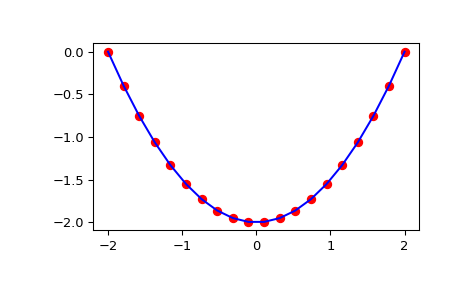cumulative_trapezoid#
- scipy.integrate.cumulative_trapezoid(y, x=None, dx=1.0, axis=-1, initial=None)[source]#
Cumulatively integrate y(x) using the composite trapezoidal rule.
- Parameters:
- yarray_like
Values to integrate.
- xarray_like, optional
The coordinate to integrate along. If None (default), use spacing dx between consecutive elements in y.
- dxfloat, optional
Spacing between elements of y. Only used if x is None.
- axisint, optional
Specifies the axis to cumulate. Default is -1 (last axis).
- initialscalar, optional
If given, insert this value at the beginning of the returned result. 0 or None are the only values accepted. Default is None, which means res has one element less than y along the axis of integration.
- Returns:
- resndarray
The result of cumulative integration of y along axis. If initial is None, the shape is such that the axis of integration has one less value than y. If initial is given, the shape is equal to that of y.
See also
numpy.cumsum,numpy.cumprodcumulative_simpsoncumulative integration using Simpson’s 1/3 rule
quadadaptive quadrature using QUADPACK
fixed_quadfixed-order Gaussian quadrature
dblquaddouble integrals
tplquadtriple integrals
rombintegrators for sampled data
Notes
Array API Standard Support
cumulative_trapezoidhas experimental support for Python Array API Standard compatible backends in addition to NumPy. Please consider testing these features by setting an environment variableSCIPY_ARRAY_API=1and providing CuPy, PyTorch, JAX, or Dask arrays as array arguments. The following combinations of backend and device (or other capability) are supported.Library
CPU
GPU
NumPy
✅
n/a
CuPy
n/a
✅
PyTorch
✅
✅
JAX
✅
✅
Dask
✅
n/a
See Support for the array API standard for more information.
Examples
>>> from scipy import integrate >>> import numpy as np >>> import matplotlib.pyplot as plt
>>> x = np.linspace(-2, 2, num=20) >>> y = x >>> y_int = integrate.cumulative_trapezoid(y, x, initial=0) >>> plt.plot(x, y_int, 'ro', x, y[0] + 0.5 * x**2, 'b-') >>> plt.show()
